A U.S. RQ-4 Global Hawk, recently deployed to RAF Fairford in England from Sigonella Naval Air Station on the Italian island of Sicily, has completed a marathon reconnaissance mission under the callsign FORTE16.
This mission saw the drone cover an extensive flight path, closely monitoring the borders of NATO member states close to Russia.
Taking off from RAF Fairford, the Global Hawk headed east over the Baltic Sea, before flying along the borders of Finland, the Baltic States, and down to the sensitive region between Poland and Ukraine.
It then made its way south, eventually returning to its base at Sigonella, Italy.
#USAF RQ-4B global hawk complete flight from yesterday seen on the flight radar, departure from RAF fairford, having made its way east a long the finnish / russia border, before circling over estonia close to russia / gulf of finland, RTB at sigonella NB. #FORTE16 #AE5421 pic.twitter.com/pzRllGfv95
— wip. (@alternativewip) August 26, 2024
The mission was part of the U.S. Air Force’s ongoing efforts to diversify its operating locations and enhance its integration with NATO Allies.
In a statement, the U.S Air Force said
“A U.S. RQ-4 Global Hawk arrived at Royal Air Force Fairford, England, for a temporary deployment Thursday, as part of U.S. Air Forces in Europe – Air Forces Africa’s efforts to diversify operating locations and enhance integration with NATO Allies. This marks the first U.S. RQ-4 deployment to England. The deployed U.S. RQ-4 will conduct operations through international and Allied airspace in accordance with international norms and standards.
The deployment also signifies the next step in USAFE-AFAFRICA’s implementation of the U.S. Air Force’s agile combat employment concept, under which aircraft may be dispersed from typical operating locations to alternate airfields to enhance survivability. The 501st Combat Support Wing at RAF Fairford has routinely supported similar deployments, including when U.S. Air Force B-52 Stratofortress aircraft operated from RAF Fairford for Bomber Task Force 24-3 in June. The support and execution of these missions demonstrate U.S. commitment to NATO Allies and partners and set conditions for potential future operations in the U.S. European Command area of responsibility.”
Operating under the callsign FORTE16, the drone provided near-real-time intelligence, significantly contributing to NATO’s situational awareness and security efforts in the region. This mission also exemplified the U.S. Air Force’s agile combat employment concept, aimed at enhancing the survivability of its assets by dispersing them across various locations.
The RQ-4 Global Hawk is a high-altitude, long-endurance, remotely piloted aircraft with an integrated sensor suite that provides global all-weather, day or night intelligence, surveillance and reconnaissance (ISR) capability.
According to the U.S. Air Force:
“Global Hawk’s mission is to provide a broad spectrum of ISR collection capability to support joint combatant forces in worldwide peacetime, contingency and wartime operations. The Global Hawk provides persistent near-real-time coverage using imagery intelligence (IMINT), signals intelligence (SIGINT) and moving target indicator (MTI) sensors.
Global Hawk is currently fielded in three distinct blocks. Seven Block 10 aircraft were procured, but were retired from the Air Force inventory in 2011. Block 20s were initially fielded with IMINT-only capabilities, but three Block 20s have been converted to an EQ-4 communication relay configuration, carrying the Battlefield Airborne Communication Node (BACN) payload.
Block 30 is a multi-intelligence platform that simultaneously carries electro-optical, infrared, synthetic aperture radar (SAR), and high and low band SIGINT sensors. Block 30 Initial Operating Capability (IOC) was declared in August 2011. Eighteen Block 30s are currently fielded, supporting every geographic combatant command as well as combat missions in Operations Enduring Freedom and Iraqi Freedom/ New Dawn. Block 30s also supported Operation Odyssey Dawn in Libya and humanitarian relief efforts during Operation Tomodachi in Japan.
The system offers a wide variety of employment options. The long range and 30+ hour endurance allow tremendous flexibility in meeting mission requirements. In 2014, an RQ-4 Block 40 flew a 34.3 hour flight, setting the endurance record for longest unrefueled flight by a U.S. Air Force aircraft.”



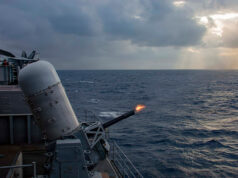
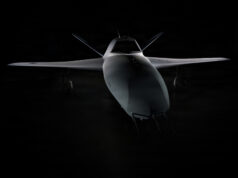
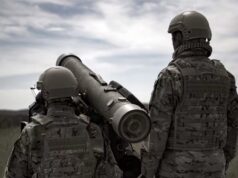
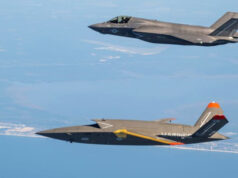
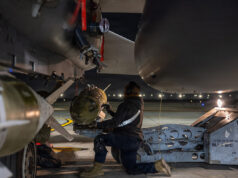
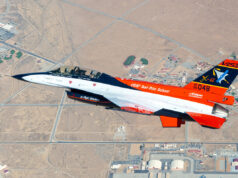
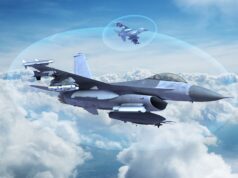
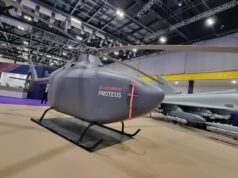
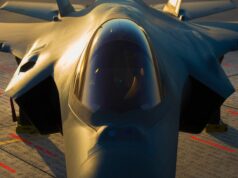

Missing the word drone in there?? 😂
Soon heheheheh btw war in ukraine is so wasting the resources see USA now big brother armory almost dry BTW they need new war too but the war when they use they human resources there that why Biden make a mid east like heLl again
A huge American? No stereotypes here.😆
😏
👍😁
😆
Its going to seem a little silly in this particular case but I feel like UKDEFJ articles often get corrected for typos etc without noting the edits.
Of course got no problem with typos/etc, particularly given its a small outfit but feel all articles should have a section at the bottom:
“Edited: date/time, item changed”
I’m sure I’ve seen articles where an extra 0 was removed from some large sums in the past
BBC for example, put such disclaimers in their articles when corrected.
The sort of beast that could back up Poseidon but probably not a cat in hells chance of the RAF ever seeing one in service.
Clearly the RAF needs a few of these. Personally, I would rather we had at least three and less of the new Space Command – despite their recent war game.
Yes, I think they would be good, especially as they are already active with allied air forces but as I said what are the chances? Space Command is actually quite small and runs the satellites and Fylingdales so no great expense really.🛰
At 120 million dollars a piece, I think I would prefer a few extra planes!
The first of 4 Triton UAVs (the USN’s evolved and enhanced version of the USAF’s Global Hawk platform) has entered service with the RAAF. They will compliment the RAAF’s 14 P8 Poseidon aircraft.
The scariest thing is that as we stride towards a new Cold War, the UK is complicit in allowing the USA to make the UK a target. Also, why is the UK so behind in this technology? When the government wants to save money and you can’t get people to join the Armed Forces, drone technology is the way ahead.
It does make you realise how impressive the US capability is, how far behind we are, and therefore how small the chances of our ever gaining such ‘real’ capability.
Well that includes the rest of the world as no one can match what the USA spend on their military, and that does not include the countless billions that go into their Black Budget.
So I don’t feel bad about it.
What “real” capability did you mean, IMINT?
There is no separate “Black Budget”. Funds allocated for “Black Programs” are included in the total DOD Budget. Sometimes the funds are listed as being expended on a classified program and other times they are hidden in other programs. Appropriate Senators, Representatives and Committee staff members are briefed on these programs. The Pentagon cannot expend a dollar unless appropriated by Congress and signed into law by the President. There is no separate line item “Black Budget.”
The low profile black programs go through the IC budget, because it’s secret and only disclosed to the ‘gang of six’ in congress. Estimated to be about 100bn/yr.
wonder what the rake off length for a stone of that size is. this kind and size should be the target for large force multiplying aircraft on our carriers.